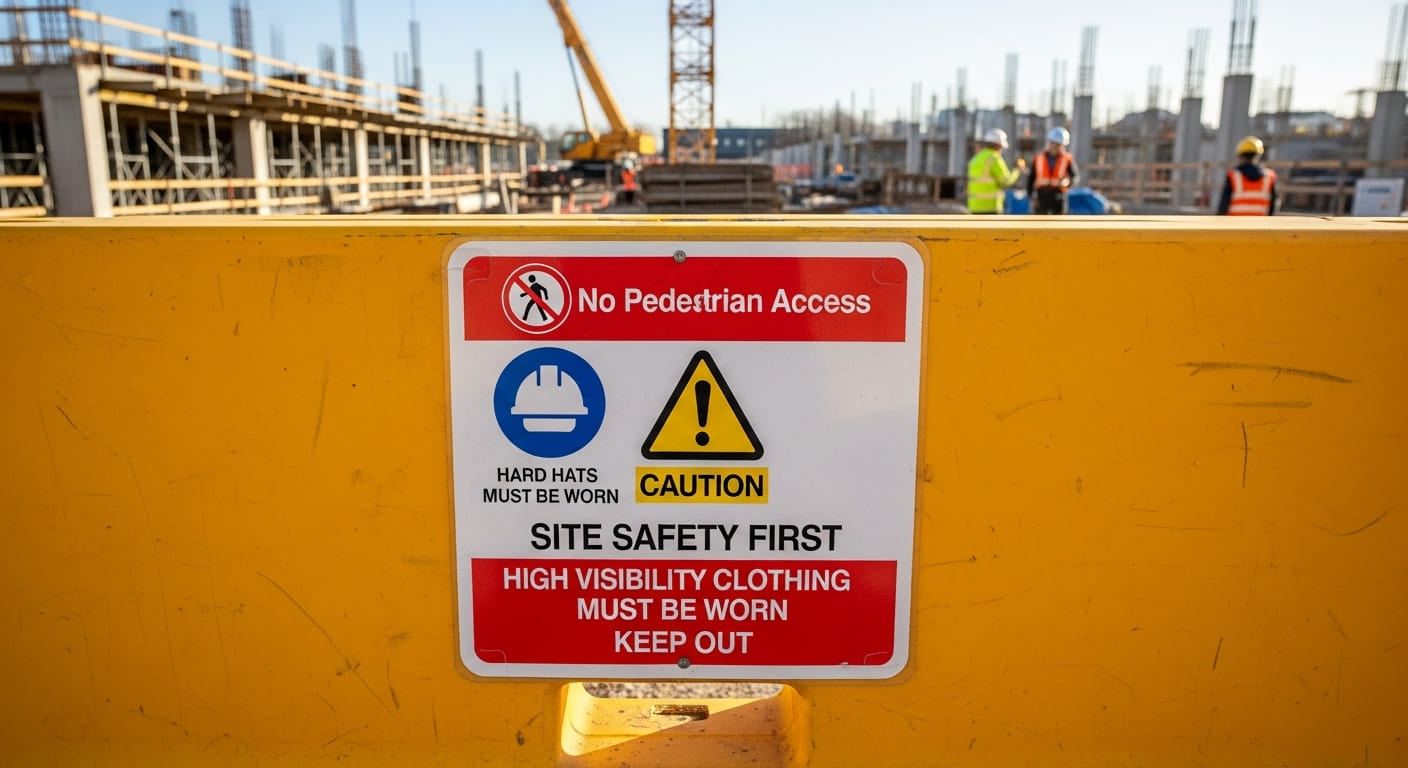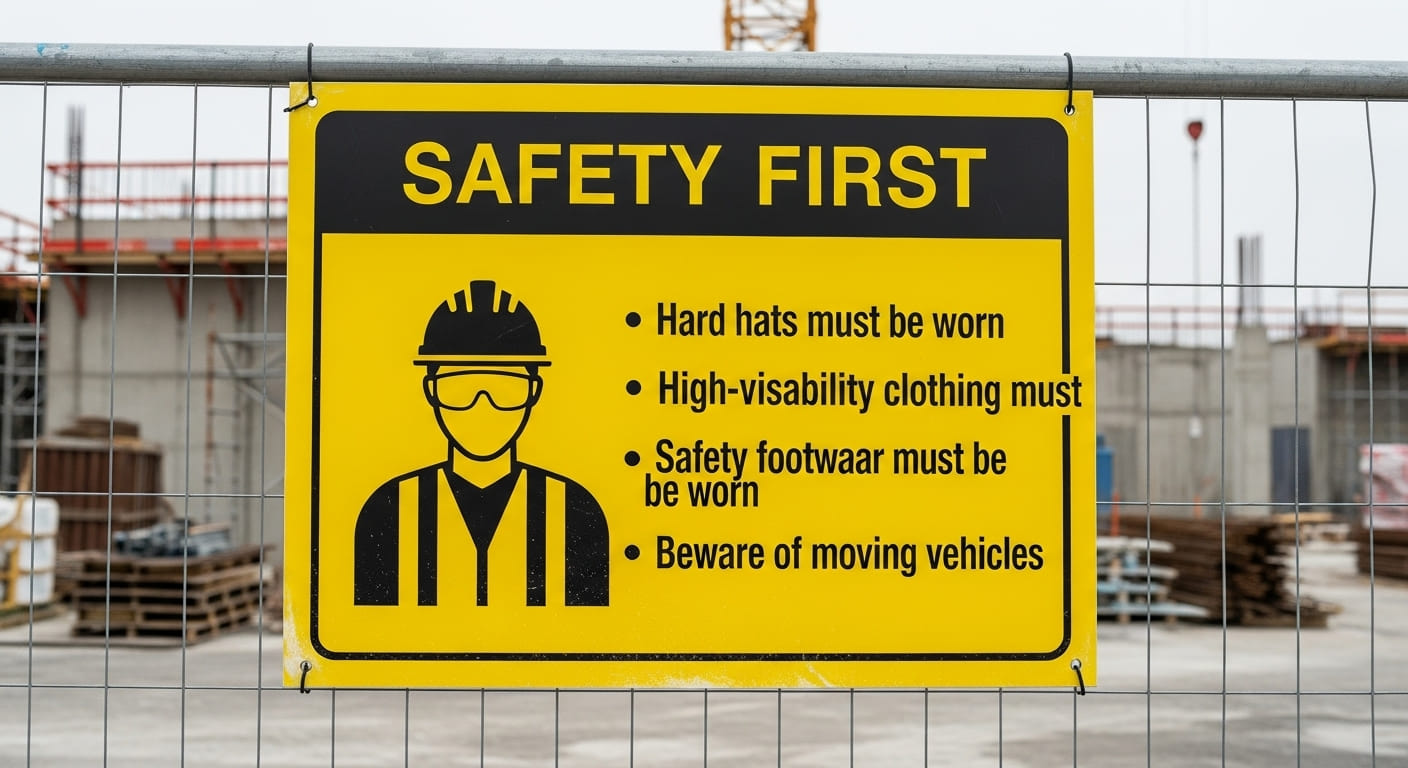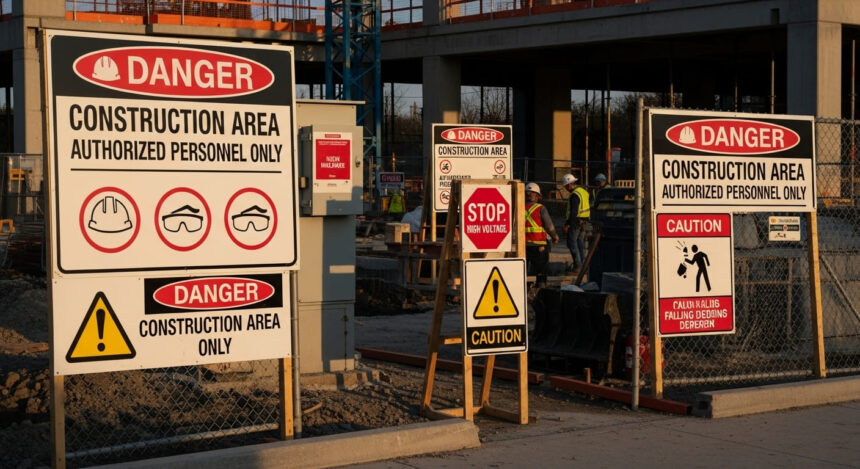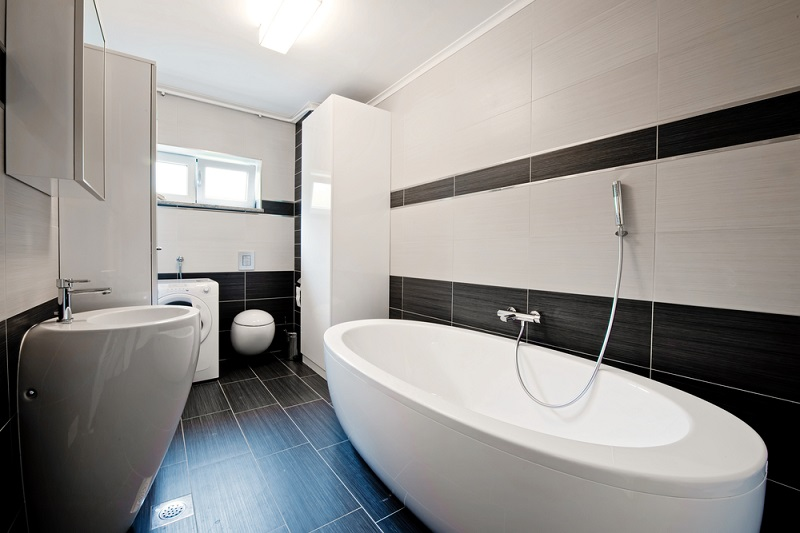You ever walk into a site or workshop and spot those bright yellow “Caution” signs, making you pause and think twice about your next step? That’s the quiet power of safety signage—those simple markers that keep folks out of harm’s way without saying a word. Here in Australia, where we tackle everything from dusty construction jobs in the outback to busy office floors in Sydney, safety signage is more than decoration; it’s a lifeline for preventing slips, shocks, or worse. I’ve helped set up a few projects where skipping proper signs led to close calls, and let me tell you, getting it right from the start saves headaches and lives. Whether you’re running a small trade business in Melbourne or fixing up your home garage in Perth, this guide chats through what safety signage involves, why it’s crucial in our neck of the woods, types to pick, and tips to make it stick. With our no-nonsense approach to work and play, let’s break it down so you can keep your space safe and compliant.
What Safety Signage Really Means and Why It Fits Aussie Life
Safety signage covers any visual cue signs, labels, or stickers that warns of dangers, guides actions, or spells out rules. Think “No Entry” at a door or “Wear PPE” near machinery. In Australia, where we love our outdoor worksites and DIY home tweaks, safety signage blends into daily routines, from factory floors in Brisbane to backyard sheds in Adelaide.
From what I’ve seen on jobs, safety signage isn’t one-size-fits-all; it’s tailored to spots like high-traffic warehouses or quiet labs. It ties into bigger talks like risk assessments or emergency plans, ensuring everyone knows the drill. A mate running a small build crew in the Gold Coast swears by clear signage—cut his near-misses by half after adding floor markers for wet areas. Our culture’s practical side shines here: We value a “fair go” for safety, so signage promotes that team watch-out vibe, especially in multicultural teams where English might not be first. With regs pushing for it, safety signage keeps things running smooth without the drama.
The Top Reasons Safety Signage Saves the Day in Australia
Diving deeper, safety signage does more than point out hazards—it’s a frontline defense in our varied environments.
Cutting Risks and Boosting Awareness
Australia’s got unique challenges—think scorching UV on outdoor sites or slippery decks from coastal rains—so safety signage flags them early. A “Slippery When Wet” floor sign in a Darwin warehouse prevents tumbles during monsoons, while “High Voltage” labels in Perth factories dodge shocks from dusty gear.
I’ve chatted with site managers who say good safety signage builds habits; workers glance and adjust without thinking. It covers latent stuff like chemical storage or fire exits, tying into training for better compliance. In family homes, like a Melbourne garage workshop, simple “Eye Protection Required” stickers keep kids safe during dad’s tinkering. Stats from Safe Work Australia show signage reduces incidents by 20-30%, a win for our hardworking ethos.
Meeting Legal Musts and Avoiding Fines
Our Work Health and Safety (WHS) laws make safety signage non-optional—AS 1319 standards dictate colors, sizes, and wording for everything from prohibition to mandatory gear. Skip it, and fines hit $300,000 for businesses or $30,000 personal.
In states like New South Wales, Sydney councils enforce it for public spaces; Queensland’s tropical humidity amps up needs for mold warnings. Competitors in signage supply vary—some focus on custom vinyl for durability, others metal for harsh sites. Example: A tradie in Hobart faced a $5,000 fine for missing “Confined Space” signs on a job—switched to weatherproof ones after, no issues since. Culturally, our “she’ll be right” attitude sometimes tests limits, but safety signage enforces caution, especially in diverse crews where pictograms bridge languages.

Types of Safety Signage and Picking the Right One
With so many options, matching safety signage to your spot keeps it effective.
Standard Warning and Prohibition Signs
These are the classics—red circles for “No Smoking” or yellow triangles for hazards like “Forklift Area.” In Aussie factories, “Authorized Personnel Only” gates off risks. For homes, “Beware of Dog” or “Hot Surface” stickers suit garages.
Photoluminescent ones glow in the dark for emergency paths—must in high-rises per NCC. A tip: Use durable aluminum for outdoor use in windy Tasmania; vinyl peels less in humid Cairns.
Mandatory and Information Safety Signage
Blue mandatory signs spell “Hard Hat Required,” while green info ones guide “First Aid Kit Here.” In construction, like Sydney builds, they pair with PPE stations. For offices, “Evacuation Route” maps save seconds in drills.
Custom ones add flair—bilingual for multicultural Melbourne teams. From experience, mixing types—like hazard warnings with info labels—covers bases without clutter.
Installing and Maintaining Safety Signage Done Right
Getting safety signage up isn’t rocket science, but doing it well lasts.
Placement Tips for Maximum Impact
Height matters—eye level (1.5m) for warnings, knee-high for floor hazards. In busy spots like Brisbane warehouses, light-reflective materials stand out. Cluster signs at entries for quick reads.
For homes, stick to high-traffic like stairs. Example: A Perth workshop owner placed “Lift with Legs” near heavy lifts—cut back strains noticeably.
Upkeep and Compliance Checks for Safety Signage
Inspect quarterly—fade from sun in Adelaide? Replace. Clean with mild soap; avoid abrasives on vinyl. WHS audits check for AS 1319 compliance—log replacements.
In coastal areas like the Central Coast, salt corrosion hits metal fast—go laminated. A simple routine keeps safety signage sharp, avoiding outdated warnings that confuse.
Questions and Answers: Common Questions About Safety Signage in Australia
Where do I place safety signage in a Sydney construction site?
At entries, hazards, and exits—eye level for warnings like “Hard Hat Area.” Sydney’s wind means secure mounts; follow AS 1319 for visibility, and cluster for quick scans.
What’s the best material for safety signage in humid Queensland?
Vinyl or laminated aluminum—resists moisture without peeling. Queensland’s tropics fade colors fast, so UV-rated; place away from direct steam in factories.
How often should I check safety signage in Melbourne offices?
Every six months—Melbourne’s dust dulls them; clean and replace faded ones. WHS requires legible signs; add photoluminescent for fire paths in high-rises.
Are custom safety signage options available for Perth workshops?
Yes, with pictograms for diverse workers—Perth’s dry air suits metal for durability. Custom adds site-specific warnings like “Dust Hazard”; check AS 1319 for compliance.
Do homes in Adelaide need safety signage for DIY areas?
Basic ones like “Eye Protection” for garages—Adelaide’s heat warps cheap vinyl, so go rigid. Not mandatory, but they prevent accidents; place at work zones.

Conclusion: Your Path to a Successful Safety Signage in Australia
Safety signage stands guard in our workplaces and homes, blending warnings, mandates, and guides to cut risks amid sun, rain, and dust—from types like yellow hazards to installs with eye-level placement and quarterly checks. We’ve covered why it prevents slips and meets WHS laws like AS 1319, materials for humid coasts or dry interiors, upkeep to dodge fines, and local twists like bilingual options in multicultural spots. In our practical, team-focused culture, safety signage fosters that “watch each other’s back” spirit, keeping sites and sheds safe.
To get yours spot-on, assess hazards and pick compliant types like UV-rated vinyl, place for visibility, and inspect regularly—start with a site walk, add customs for unique needs, and log for audits. Consult WHS resources or pros for big setups. With solid safety signage, you’ll build safer spaces, dodging dangers and enjoying peace of mind in true Aussie style.



